What is good posture
Posture is the position in which you hold your body upright against gravity while standing, sitting or laying down. Good posture helps to minimise the amount of strain imposed on our muscles, joints and ligaments whilst performing our daily activities.
If you want an example of good posture, just look at a young child – their back shows a graceful ‘S’ curve and their movements are easy and effortless. As we get older, bad habits such as slouching and inactivity cause muscle fatigue and tension that ultimately lead to poor posture. The complications of poor posture include back pain, spinal dysfunction, joint degeneration, rounded shoulders and a potbelly.
Symptoms of poor posture can include –
- Rounded shoulders
- Potbelly
- Bent knees when standing or walking
- Head that either leans forward or backward
- Back pain
- Body aches and pains
- Muscle fatigue
- Headache.
Living in the 21st Century means that we sit for far longer than ever before in history. We sit to work, to play and then, when we are tired, we slouch on the sofa. This slouching encourages our low back to take exactly the opposite to ideal shape. Our lifestyles also encourage us to be physically passive. Our work involves smaller and smaller movements performed under tension (compare the physicality of the skills required to use a manual typewriter with those for a computer keyboard!)
Sitting is in itself tough on the back but slouching is one of the most constant and damaging strains on our spines in modern life. If we slouch on a regular basis the slouch will feel ‘normal’ to us but human nature is to interpret that feeling as if it is correct.
Proper posture –
- Lessens muscle strain by keeping bones and joints in correct alignment.
- Reduces the abnormal wearing of joint surfaces caused by overstrain and overload.
- Minimises ligamentous strain on the joints of the spine and posture loaded joints.
- Reduces fatigue due to more efficient use of muscles, allowing the body to use less energy.
- Helps prevents muscular pain and backache.
- Contributes to a more assertive and positive appearance.
Remember, as the twig is bent,
so grows the tree.
Postural mechanisms
Poor posture interferes with a number of the body’s postural mechanisms including:
- ‘Slow twitch’ and ‘fast twitch’ muscle fibres
- Muscle strength and length
- Nervous system feedback on the body’s position in space.
- Proper posture requirements:
- Strong postural muscles
- Balanced muscle tone on both sides of the spine
- Good muscle and joint flexibility
- An understanding of what constitutes good posture which leads to conscious correction.
With practice, the correct posture for standing, sitting, and lying down will gradually replace your old posture.
What is the correct way to stand?
Most people when asked to stand with good posture immediately stand tall, arching their spine and pulling their shoulders back. It looks uncomfortable and is a far cry from a healthy standing posture. Keep it simple – try using PUPPET POSTURE !
Puppet posture is a term I have used to simplify the process of assuming correct posture. It works especially well with children as they can identify easily.
Imagine that you are a puppet (well try to at least!) with a string coming out of the top of your head. Gently lift the imaginary string upwards to straighten your spine. Your arms and shoulders will assume the best posture they can for your current spinal function. Watch yourself in the mirror to visualise what you are achieving. Practice regularly, it gets easier as your spine and muscles gain strength.
Sleeping Posture
- Sleep on your back or side only.
- Do not sleep on your stomach as this often causes lower back and neck strain.
- Use a quality contoured pillow that provides adequate support to your head and neck while sleeping.
- When arising from bed, move to the side of the bed and push yourself up sideways while swinging your legs off the side.
- When your back is painful you may place a pillow under your knees (when on your back) or between your knees (when on your side).
You can improve your posture and spinal health by making a few lifestyle adjustments. See your Physiotherapist for further information and advice.

